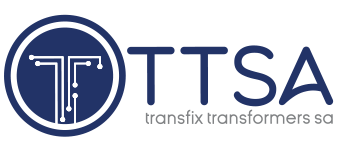Engineering News editor Terence Creamer discusses the approval of a revised unbundling plan for Eskom and the potentially far-reaching implications for both the State-owned company and the framework governing the transition to a more competitive market structure,
Posts
Licensed electricity trader Discovery Green, the energy platform of the Discovery Group, continues to advance two of South Africa’s largest private-sector renewable-energy developments, marking a significant milestone in the scaling of utility-level clean power for corporate offtakers. The projects, which achieved financial close this year, include the 150 MW Overberg Wind Farm, in the Western Cape, and the 300 MW Tournee Solar Park, in Mpumalanga. They represent the first phase of a broader procurement programme intended to strengthen private-sector participation in creating new generation capacity, thereby supporting national decarbonisation objectives.
Aligned with the 2024 Transmission Development Plan (TDP), State-owned power utility Eskom subsidiary National Transmission Company South Africa (NTCSA) currently has 75 projects – at various stages of development from procurement to execution that will enable about 37 GW of new generation connection capacity by 2030, says NTCSA CEO Monde Bala. These projects include the construction of 3 000 km of transmission lines, of which 455 km have already been completed, along with about 28 000 MVA of transformer capacity, 5 800 MVA of which has been commissioned.
For the national grid to facilitate increased renewable power generation, the Department of Electricity and Energy (DEE) has affirmed that about 14 000 km of new transmission lines are required over the next decade, with DEE Deputy-Minister Samantha Graham-Maré asserting that transmission remains a critical issue for the country. Traditionally, State-owned power utility Eskom has set itself yearly targets of about 200 km of new transmission lines, and this remains part of its planning, with this year’s target being about 174 km.
As South Africa accelerates the shift towards a more liberalised electricity market, private-sector-driven renewable-energy projects are emerging as critical instruments for meeting near-term capacity needs, states renewables company G7 Renewable Energies CEO Dr Kilian Hagemann. Karreebosch, owned by turnkey energy solutions company Cennergi Holdings and G7 Renewable Energies, is located between the towns of Sutherland in the Northern Cape and Matjiesfontein in the Western Cape.
With the renewables sector moving beyond proof-of-concept into industrial-scale deployment, South Africa’s leading financiers are playing a pivotal role in translating policy ambition into bankable infrastructure. For Standard Bank Corporate and Investment Banking (CIB), success in scaling up renewable-energy projects hinges on collaboration, disciplined risk allocation and a growing ecosystem of private offtake models reshaping the country’s energy market. South Africa’s renewable-energy landscape continues to evolve as projects under public procurement and private contracting frameworks advance to financial close, says Standard Bank CIB power head Rentia van Tonder. Standard Bank has emerged as one of the leading financiers enabling this shift, combining traditional project-finance rigour with innovative structures tailored to a more liberalised energy environment.
Trade union Solidarity says the time is ripe for negotiations for an appropriate Eskom power tariff that can keep the ferrochrome industry afloat while benefitting other parties. Although this willingness to negotiate is welcomed, and retrenchments at Glencore-Merafe’s and Samancor’s smelters have been postponed as a result, retrenchments have not yet been finally averted, Solidarity deputy general secretary Willie Venter notes.
The 75 MW Umoyilanga hybrid project, which combines solar, wind and battery storage technologies across two sites to produce dispatchable electricity, has taken a step closer to its full commercial operations date (COD) with construction completed at the Dassiesridge site in the Eastern Cape. The project, which was one of the winning bidders under South Africa’s troubled Risk Mitigation Independent Power Producer Procurement Programme (RMIPPPP) that was overshadowed by the powership bids, is being developed by a consortium involving EDF power solutions and investment company Perpetua Holdings.
The African Development Bank (AfDB) has approved a $10-million loan to support the development of Hyphen Hydrogen Energy’s $10-billion green ammonia project, in Namibia. The loan, sourced from the Sustainable Energy Fund for Africa, will support front-end engineering and design studies for solar and wind generation, battery energy storage systems and electrolyser capacity and desalination infrastructure, thereby derisking the project and attracting the financing needed to implement the project …
The Merafong City local municipality, in Gauteng, has become the third municipality in South Africa to sign a distribution agency agreement (DAA) with State-owned utility Eskom, marking a major structural intervention aimed at stabilising electricity distribution and improving revenue collection in the area. The agreement was formally concluded on December 8, during a signing ceremony at the Merafong Council Chambers attended by municipal manager Dumisani Mabuza, senior executives of Merafong City and senior Eskom leadership led by Gauteng Cluster Organisation GM Bandile Jack.
INDUSTRY NEWS
- NERSA appoints Electricity Market Advisory Forum to guide power-market reformDecember 19, 2025 - 2:04 pm
- Eskom offers more details on envisaged roles of the NTCSA and the TSODecember 18, 2025 - 11:04 am
- NTCSA says any electricity deal to salvage Mozal must ensure its financial sustainabilityDecember 17, 2025 - 3:01 pm
WHERE TO FIND US
Address
9 Yellow Street
Botshabelo Industrial Area
Botshabelo, Free State
Call / Email Us
Tel: +27 (0) 61 956 6772
Email: info@transfix.co.za
